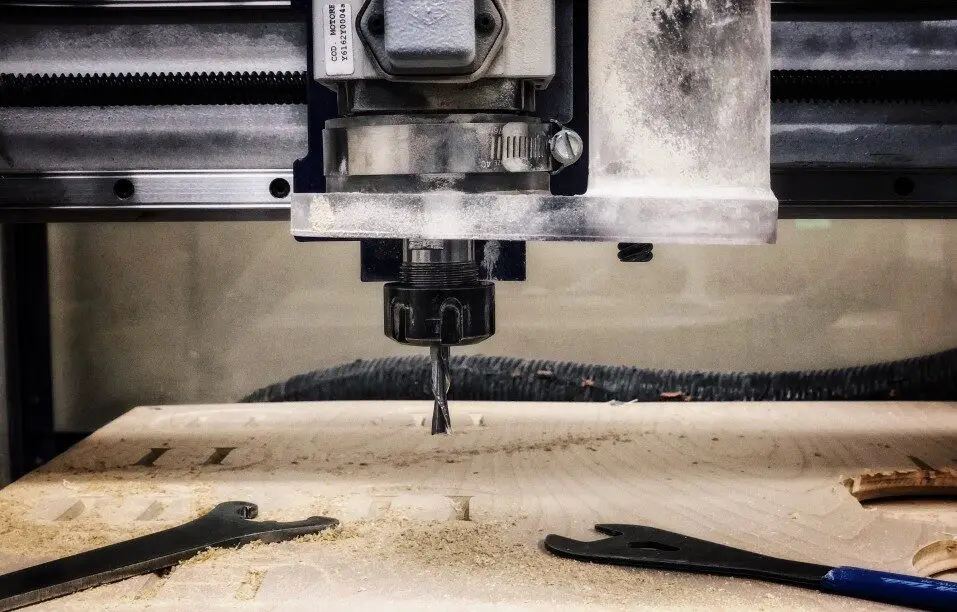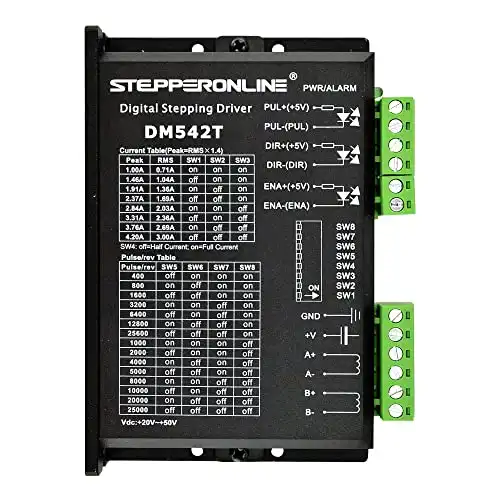When it comes to customized-manufactured goods, nothing compares to having a high-quality CNC router by your side. Computer Numerical Control machines allow you to create unique designs that can be cut into a wide array of materials, including wood, metal, and plastic.
Although these devices are handy for many applications, they can break down just like any other machine. When that happens, you need to replace the various parts and mechanisms that make the CNC router work.
Fortunately, it’s never been easier to find CNC router parts online. This article will outline the various components you may need to keep your router in good working condition. Here’s everything you need to know.
CNC Router Parts
Regardless of the size of your CNC router, it comes with some standard parts. We’ll break down each piece, including:
- Frame
- Table
- Spindle
- Axes (aka Ways)
- Axis Drive
- CNC Controller
- Accessories
Frame
The frame is the main structure of the router. It will hold everything else, and it can vary significantly in size. Some models may be small enough to fit on a desktop, while others might fill a room.
Larger frames will have their own stands, while smaller models will need a bench or a table to sit on.
CNC router frames can be made of multiple materials, including aluminum, steel, and wood. The type of frame you use will depend on the work you do with your router.
Table
The table is the surface upon which you shape and cut your finished pieces. Typically, CNC router tables will have built-in features to facilitate your workload. As with the frame, you can find tabletops made of aluminum, steel, wood, or MDF. Foam tabletops are meant to be disposable, while other varieties can be reused.
Examples of table components can include:
- T-Slots – You can use vices and other tools with your CNC router to get better results. These slots are often shaped like an upside-down T, but you can find custom-built versions as well.
- Hole Grid – You can find multiple kinds of CNC table grids, each designed for a specific purpose. Hole grids are used to help the machine reset itself after every job. So, this tabletop is ideal for workshops that produce lots of identical products quickly.
- Vacuum Table – CNC machining generates a lot of dust and waste. Vacuum tables can help alleviate this mess by sucking up the debris as it flies off the material’s surface.
If you’re setting up a table for your router, you may want to check out our quick guide on finding the right router table height.
Spindle
If the frame is the skeleton of the CNC router, the spindle is the heart and soul of the machine. This component does all the cutting and shaping, so it’s crucial to have a high-quality spindle.
Low-end CNC routers may simply have a slot for a third-party spindle that you can just set into the frame. High-end routers will have either a variable frequency drive (VFD) or an automatic tool changer (ATC).
ATC spindles are the best option because they help improve productivity and efficiency. Since the router can change tools itself, you don’t have to spend extra time swapping out tips during a job. Instead, you set a line of them next to the machine, and the spindle will handle everything. ATC spindles are ideal for complex parts.
A variable frequency drive adjusts the power output to match the load. So, when the spindle needs high RPMs, the motor will go faster to accommodate the change. VFDs not only help preserve the unit and lessen wear and tear, but they also help conserve electricity.
Axes or Ways
A CNC router needs to move on at least three axes to complete each project. The mechanisms that the machine uses to achieve motion are called ways, and there are a few different types. Two ways sit on either side of the frame, allowing the spindle to move across the whole table. A third way enables the spindle to move back and forth and up and down.
Let’s break down the most common CNC router ways you can find.
- V-Groove – The tracks are shaped like a V. The mechanism uses a ball bearing to move along the groove. V-groove models are the least accurate, and they need regular adjustment to correct for mistakes.
- Round-Groove – The track is shaped like a U, which holds the ball bearings more completely. This way, they don’t move around or slide out while the router is working. If you need better control over your projects, a round-groove drive is the best option.
- Linear Slide – High-end CNC routers will use a linear slide, which offers more stability and rigidity while moving. Typically, linear slides are ideal for complex projects with lots of intricate movements and designs. These parts have prismatic tracks and trucks that ride on multiple ball bearings for smoother movement.
Axis Drive
Since the router moves along multiple axes, each one needs its own motor to move in coordination with the others. When choosing a motor, you have to consider a few variables, such as precision and vibration.
For example, belt-driven motors are cost-effective, but the belts can vibrate the spindle or ways slightly, leading to imperfections during the shaping process.
There are two primary motors you can use in an axis drive: stepper and servo.
Servo motors are the better option between the two because they don’t have to reset to zero, and they offer much better precision. However, they’re also much more expensive.
For the drive itself, there are three options: belt-driven, rack and pinion, and ballscrew. Here’s a quick overview of each one.
- Belt-Driven – As the name suggests, a small belt transfers rotation motion to linear motion. As we mentioned, these drives are less precise because they can wobble slightly while moving.
- Rack and Pinion – This drive uses a linear and a circular gear to create movement. Because these are fixed gears, there’s less variation while working, so you get more precise results.
- Ballscrew – This is a high-end option that offers highly efficient motion and much less vibration. If you need to create tiny, intricate cuts, you should use a ballscrew axis drive.
CNC Controller
The whole point of using a CNC router is that you can create digital designs on the computer and send them to the machine for cutting and shaping. So, a CNC controller is what you use to connect the computer to the router.
Some controllers are independent devices with a hard drive and screen. Other options may connect to a PC, or they may be software on a standard PC. These days, CNC controllers are very user-friendly and can allow you to create some incredible designs. Just make sure that your router can handle whatever you create.
Accessories
You’ll need a wide array of extra tools and components to get the most out of your CNC router. Fortunately, there are tons of accessories that can help you achieve different objectives. We won’t break all of them down here, but here’s a quick overview of some common CNC parts you may need:
- Vice Grips – Vices will help keep your material in place while cutting and shaping. You’ll need a complete set of vices to handle different materials and thicknesses no matter what you’re making.
- Drawing Tool – Rather than cutting your material, a drawing tool allows you to mark the surface first. This way, you can draw intricate designs and shape them yourself if necessary.
- Laser Module – If you want to feel more high-tech, you can cut your materials with lasers instead of a router. This accessory is perfect for laser engraving projects.
You can find many more accessories online here.
Where to Buy CNC Router Parts
Knowing the different CNC router parts is just the first step. Next, you need to know where to buy them. Thankfully, there are many online retailers where you can find all the parts you need for your machine. Here are some of our favorites.
Is there anything you can’t find on Amazon.com? As the world’s largest online marketplace, you can find a vast array of parts and accessories. Better yet, since Amazon partners with third-party sellers, you can get pieces from high-quality brands and manufacturers.
Another advantage of buying from Amazon is that you can often get free and/or expedited shipping. If you’re a Prime member, you can get your parts much faster than you would through other sites.
Since this store is a small retailer in California, the selection is not as vast as what you’d find on Amazon or larger seller sites. However, Carbide 3D does make CNC routers, so you can get every part you’ll ever need. The shipping costs and times are also a bit higher than you can find elsewhere, but the quality and reliability are superb overall. Carbide 3D focuses primarily on routers for small workshops and hobbyists, not industrial-grade job sites.
This retailer works with AXYZ, which is an industrial manufacturer for CNC routers and waterjet cutters. So, the quality of the parts on this site is incredible. CNC Shop also has an excellent customer support team so that you can get help sourcing the best components for your router.





